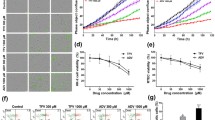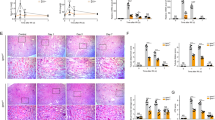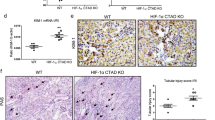Abstract
The arginine decarboxylase (ADC) is a significant functional enzyme, synthesizes agmatine through arginine metabolism, and agmatine was reported to posses protective properties in various tissues. This study first optimized the conditions for efficient hexahistidine tagged human ADC (hisADC) gene delivery into mouse fibroblast cell line (NIH3T3) using retroviral vector (pLXSN). Later, the functionality of the delivered hisADC gene in synthesizing agmatine during H2O2 injury in NIH3T3 was also elucidated. Amplification of hisADC gene was performed using hisADC specific primers under specified conditions. The hisADC PCR product (1.4 kb) was ligated with pLXSN considering the restriction enzyme sites. The complete hisADC pLXSN clone was transfected into PT67 cell line following CalPhos Mammalian transfection method. RT-PCR and western blot results showed the specific and strong detection of hisADC genes in hisADC PT67 transfected cells compared with normal control and pLXSN transfected PT67 cells. The retrovirus containing hisADC gene (vhisADC) was infected into NIH3T3 (vhisADC NIH) using polybrene reagent. Immunocytochemical results showed hisADC expression in the cytoplasm of vhisADC NIH. HPLC analysis revealed high agmatine concentration in the vhisADC NIH, and the induced agmatine synthesized from the retroviral gene delivery prevented vhisADC NIH from H2O2 injury which is evident by the decrease in lactate dehydrogenase (P < 0.05) leakage into the medium and less number of propidium iodide positive cells during injury compared to control group. The obtained results provide compelling evidence that higher level of hisADC transgene expression completely triggered the endogenous agmatine synthesis during H2O2 injury thus protecting NIH3T3 cells against cytotoxicity.




Similar content being viewed by others
References
Li G, Regunathan S, Barrow CJ et al (1994) Agmatine: an endogenous clonidine-displacing substance in the brain. Science 263:966–969
Lortie MJ, Novotny WF, Peterson OW et al (1996) Agmatine, a bioactive metabolite of arginine. Production, degradation, and functional effects in the kidney of the rat. J Clin Invest 97:413–420
Tabor CW, Tabor H (1984) Polyamines. Annu Rev Biochem 53:749–790
Regunathan S, Piletz JE (2003) Regulation of inducible nitric oxide synthase and agmatine synthesis in macrophages and astrocytes. Ann N Y Acad Sci 1009:20–29
Piletz JE, May PJ, Wang G et al (2003) Agmatine crosses the blood-brain barrier. Ann N Y Acad Sci 1009:64–74
Kim JH, Yenari MA, Giffard RG et al (2004) Agmatine reduces infarct area in a mouse model of transient focal cerebral ischemia and protects cultured neurons from ischemia-like injury. Exp Neurol 189:122–130
Satriano J, Schwartz D, Ishizuka S et al (2001) Suppression of inducible nitric oxide generation by agmatine aldehyde: beneficial effects in sepsis. J Cell Physiol 188:313–320
Iizuka Y, Hong S, Kim CY et al (2008) Agmatine pretreatment protects retinal ganglion cells (RGC-5 cell line) from oxidative stress in vitro. Biocell 32:245–250
Feng Y, Piletz JE, Leblanc MH (2002) Agmatine suppresses nitric oxide production and attenuates hypoxic-ischemic brain injury in neonatal rats. Pediatr Res 52:606–611
Gilad GM, Gilad VH (2000) Accelerated functional recovery and neuroprotection by agmatine after spinal cord ischemia in rats. Neurosci Lett 296:97–100
Gilad GM, Salame K, Rabey JM et al (1996) Agmatine treatment is neuroprotective in rodent brain injury models. Life Sci 58:PL 41–PL 46
Yang XC, Reis DJ (1999) Agmatine selectively blocks the N-methyl-D-aspartate subclass of glutamate receptor channels in rat hippocampal neurons. J Pharmacol Exp Ther 288:544–549
Yu CG, Marcillo AE, Fairbanks CA et al (2000) Agmatine improves locomotor function and reduces tissue damage following spinal cord injury. Neuroreport 11:3203–3207
Olmos G, DeGregorio-Rocasolano N, Regalado MP et al (1999) Protection by imidazol(ine) drugs and agmatine of glutamate-induced neurotoxicity in cultured cerebellar granule cells through blockade of NMDA receptor. Br J Pharmacol 127:1317–1326
Lu J, Goula D, Sousa N et al (2003) Ionotropic and metabotropic glutamate receptor mediation of glucocorticoid-induced apoptosis in hippocampal cells and the neuroprotective role of synaptic N-methyl-D-aspartate receptors. Neurosci 121:123–131
Arndt MA, Battaglia V, Parisi E et al (2009) The arginine metabolite agmatine protects mitochondrial function and confers resistance to cellular apoptosis. Am J Physiol Cell Physiol 296:C1411–C1419
Kribben B, Heller J, Trebicka J et al (2004) Agmatine (decarboxylated arginine), a modulator of liver cell homeostasis and proliferation. Naunyn Schmiedebergs Arch Pharmacol 369:160–165
Ishizuka S, Cunard R, Poucell-Hatton S et al (2000) Agmatine inhibits cell proliferation and improves renal function in anti-thy-1 glomerulonephritis. J Am Soc Nephrol 11:2256–2264
Sugiura T, Kobuchi S, Tsutsui H et al (2009) Preventive mechanisms of agmatine against ischemic acute kidney injury in rats. Eur J Pharmacol 603:108–113
Blo M, Micklem DR, Lorens JB (2007) Drug target discovery using retroviruses. Expert Opin Drug Discov 2:1285–1300
Lorens JB, Sousa C, Bennett MK et al (2001) The use of retroviruses as pharmaceutical tools for target discovery and validation in the field of functional genomics. Curr Opin Biotechnol 12:613–621
Brummelkamp TR, Bernards R, Agami R (2002) A system for stable expression of short interfering RNAs in mammalian cells. Science 296:550–553
Lee WT, Hong S, Yoon SH et al (2009) Neuroprotective effects of agmatine on oxygen-glucose deprived primary-cultured astrocytes and nuclear translocation of nuclear factor-kappa B. Brain Res 1281:64–70
Sambrook J, Russell DW (2001) Molecular Cloning: A laboratory manual. Cold Spring Harbor Laboratory Press, Cold Spring Harbor
Mann R, Mulligan RC, Baltimore D (1983) Construction of a retrovirus packaging mutant and its use to produce helper-free defective retrovirus. Cell 33:153–159
Miller AD, Buttimore C (1986) Redesign of retrovirus packaging cell lines to avoid recombination leading to helper virus production. Mol Cell Biol 6:2895–2902
John MC (1992) Structure and classification of retroviruses. The Retroviridae 1:20–30
Li YF, Chen HX, Liu Y et al (2006) Agmatine increases proliferation of cultured hippocampal progenitor cells and hippocampal neurogenesis in chronically stressed mice. Acta Pharmacol Sin 27:1395–1400
Zhu M, Wang W, Cai Z et al (2008) Exogenous agmatine has neuroprotective effects against restraint-induced structural changes in the rat brain. Eur J Neurosci 27:1320–1332
Morris SM (2003) Vertebrate agmatinases: what role do they play in agmatine catabolism? Ann N Y Acad Sci 1009:30–33
Cai S, Ma Q, Yu X et al (2002) Expression of human VEGF(121) cDNA in mouse bone marrow stromal cells. Chin Med J (Engl) 115:914–918
Acknowledgments
This work was supported by the Korea Science and Engineering Foundation (KOSEF) grant funded by the Korea government (MEST) (No. 2009-0052626), by a grant (#HMP-A080959-0902-0000100) of the 2008 Good Health R&D Project, Ministry of Health & Welfare, Korea. Special thanks to Dr. Regunathan for providing the ADC antibody to our research work.
Author information
Authors and Affiliations
Corresponding author
Rights and permissions
About this article
Cite this article
Moon, SU., Kwon, KH., Kim, JH. et al. Recombinant hexahistidine arginine decarboxylase (hisADC) induced endogenous agmatine synthesis during stress. Mol Cell Biochem 345, 53–60 (2010). https://doi.org/10.1007/s11010-010-0559-6
Received:
Accepted:
Published:
Issue Date:
DOI: https://doi.org/10.1007/s11010-010-0559-6




